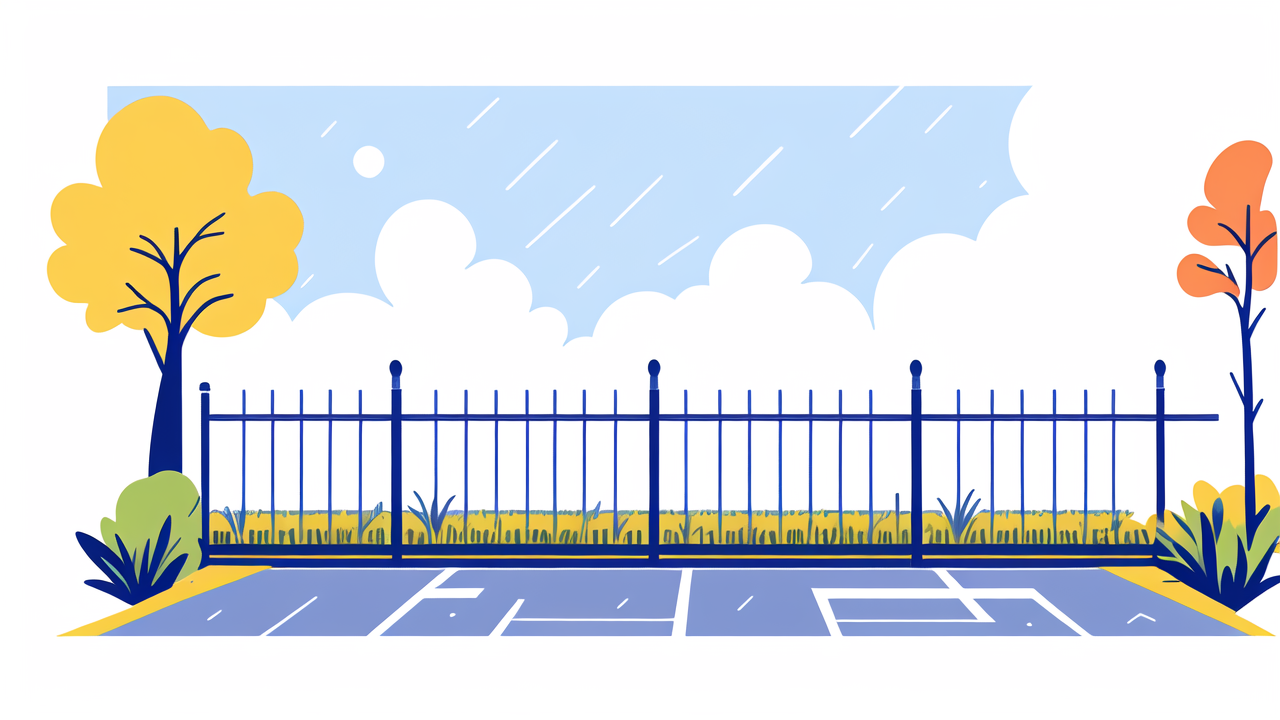The Importance of Proper Fence Bracing in United States
Understanding the Role of Fence Bracing in Structural Integrity
Fence bracing is crucial for a stable and long-lasting fence. It provides support and prevents leaning or sagging. Proper bracing distributes weight evenly along the fence line. This reduces stress on individual posts and improves overall stability. In areas with strong winds or heavy snowfall, bracing is even more important. It helps the fence withstand harsh weather conditions. Without proper bracing, fences can become weak and unsafe. They may lean, fall, or break under pressure. Good bracing also extends the life of your fence. It reduces the need for repairs and replacements over time.

Evaluating Fence Bracing Solutions for Inground Posts
There are several bracing options for inground posts. Each has its own benefits and drawbacks. Here are some common solutions:
- Concrete anchors: Very stable but hard to install
- Metal brackets: Durable and easy to use
- Wooden braces: Cost-effective but need more upkeep
- Diagonal supports: Strong but can be unsightly
Your choice depends on factors like soil type, fence height, and local climate. Consider the fence material too. Some braces work better with certain fence types. Check local building codes before deciding. Some areas have specific rules for fence bracing. Think about long-term maintenance as well. Some bracing methods require more upkeep than others. Choose a solution that fits your needs and skills.
Step-by-Step Guide to Installing Inground Post Fence Bracing
Selecting the Right Materials for Durability and Performance
Choosing the right materials is key to effective fence bracing. For inground posts, consider these options:

- Pressure-treated wood: Resists rot and insects
- Galvanized steel: Strong and rust-resistant
- Composite materials: Low-maintenance and weather-resistant
- Concrete: Very durable but hard to work with
Your choice should suit your local climate and soil conditions. In wet areas, use materials that resist moisture damage. For coastal regions, pick salt-resistant options. Always opt for high-quality materials. They may cost more upfront but save money in the long run. They last longer and need less maintenance. Remember, your fence is only as strong as its weakest part. Good bracing materials ensure a sturdy, long-lasting fence.
Detailed Installation Process for Inground Posts
Installing inground post fence bracing requires careful steps. Follow this process for best results:
- Mark post locations and dig holes to the right depth.
- Place posts in holes and check they're straight.
- Mix concrete according to instructions.
- Pour concrete around posts, leaving space at top for soil.
- Install bracing supports while concrete is wet.
- Let concrete fully cure before adding fence panels.
For diagonal braces, attach at a 45-degree angle from ground to post. Make sure all connections are secure and weatherproof. Use a level to keep posts straight as concrete sets. This process may vary based on your chosen bracing method. Always follow the manufacturer's guidelines for specific products. Take your time and be precise for the best outcome.
Safety Measures and Best Practices in Fence Bracing Installation
Safety is crucial when installing fence bracing. Follow these important guidelines:
- Wear protective gear: Gloves, safety glasses, and sturdy boots.
- Use proper lifting techniques to avoid injuries.
- Keep the work area clear of tripping hazards.
- Handle power tools carefully and follow all safety rules.
- Check for underground utilities before digging.
Work with a partner when handling heavy materials. Take regular breaks to avoid getting too tired. Fatigue can lead to mistakes or accidents. If you're unsure about any step, ask a professional. Plan your work carefully and follow all safety measures. This ensures a smooth and safe installation process. Remember, it's better to take your time and be safe than to rush and risk injury.
Troubleshooting Common Issues in Fence Bracing and Post Installation
Identifying and Addressing Common Bracing Failures
Even well-installed fence bracing can sometimes fail. Watch out for these common problems:

- Leaning posts due to weak bracing
- Loose connections between braces and posts
- Rotting or rusting bracing materials
- Frost heave moving posts
To fix these issues, first find the cause. Look for signs of water damage or soil problems. Tighten loose connections and replace damaged parts. For leaning posts, you might need to reinstall the brace. In areas with frost heave, use deeper post holes or frost-resistant materials. Regular checks can catch problems early. This prevents more serious damage later on. Address any issues quickly to keep your fence strong and stable.
Post-Installation Inspection and Maintenance Tips
After installing your fence bracing, regular upkeep is important. Do these tasks to keep your fence in good shape:
- Inspect your fence regularly, especially after bad weather.
- Look for signs of wear, rust, or rot.
- Check that all connections are tight and secure.
- Clean your fence and bracing to prevent buildup of debris.
- Apply protective sealant to wooden parts every few years.
- Treat metal components for rust as needed.
Address any problems you find right away. Small issues can become big problems if ignored. With proper care, your fence bracing can last many years. Regular maintenance saves money on repairs in the long run. It also keeps your fence looking good and working well. Make fence care a part of your regular home maintenance routine.
Seeking Professional Help for Complex Fence Bracing Installations
Some fence bracing projects are too complex for DIY. Consider hiring a pro for these situations:
- Large or complicated fence installations
- Difficult terrain or soil conditions
- Projects that must meet specific building codes
- Specialized bracing systems
Professionals have the right tools and know-how for tough jobs. They can handle difficult installations efficiently. They also know local building rules and can ensure your fence meets all codes. When choosing a contractor, look for licensed and insured pros with good reviews. Get multiple quotes and ask for references. Professional help may cost more upfront. But it can save time and ensure a properly braced fence that lasts for years.
